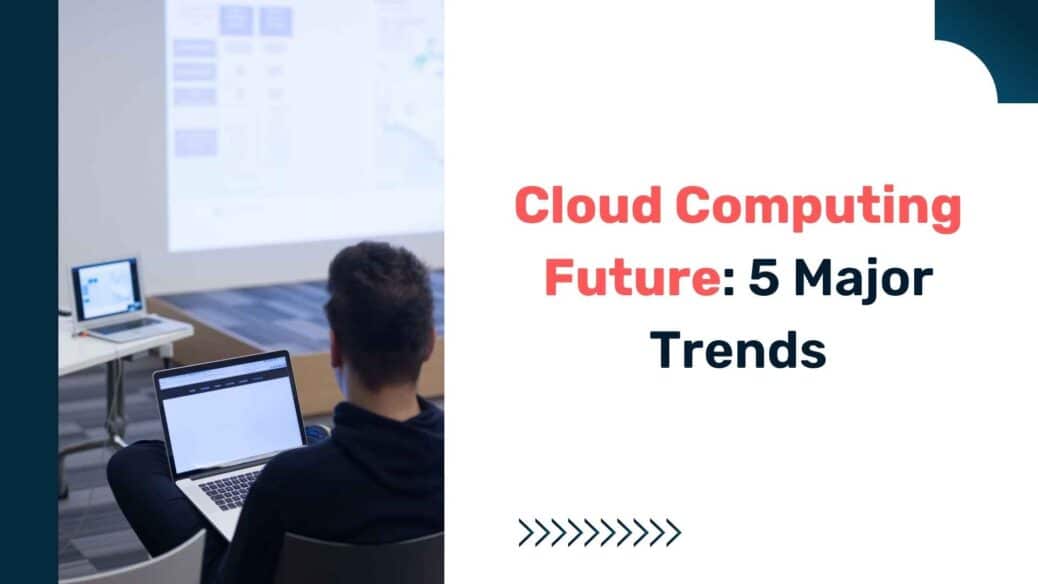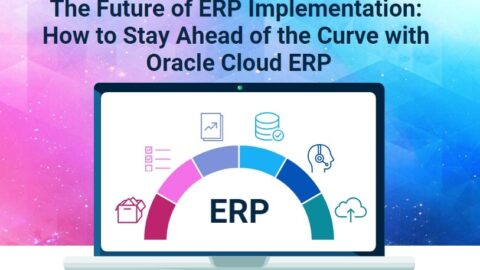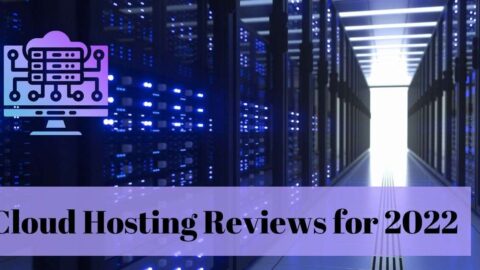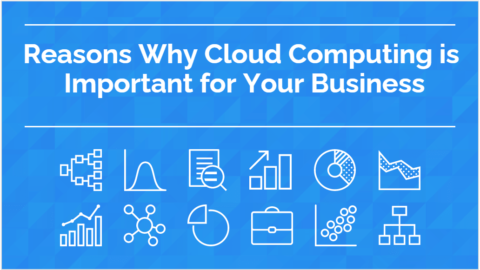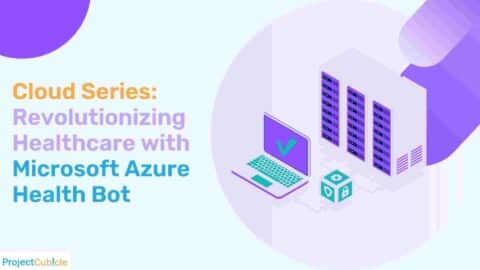Cloud Computing Future: 5 Major Trends
What is the cloud computing future? The dynamic landscape of cloud computing is continuously evolving. As businesses and individuals increasingly rely on the cloud for data storage and application hosting, it’s crucial to understand where this technology is heading. Here are five significant trends that are shaping the future of cloud computing.
Table of Contents
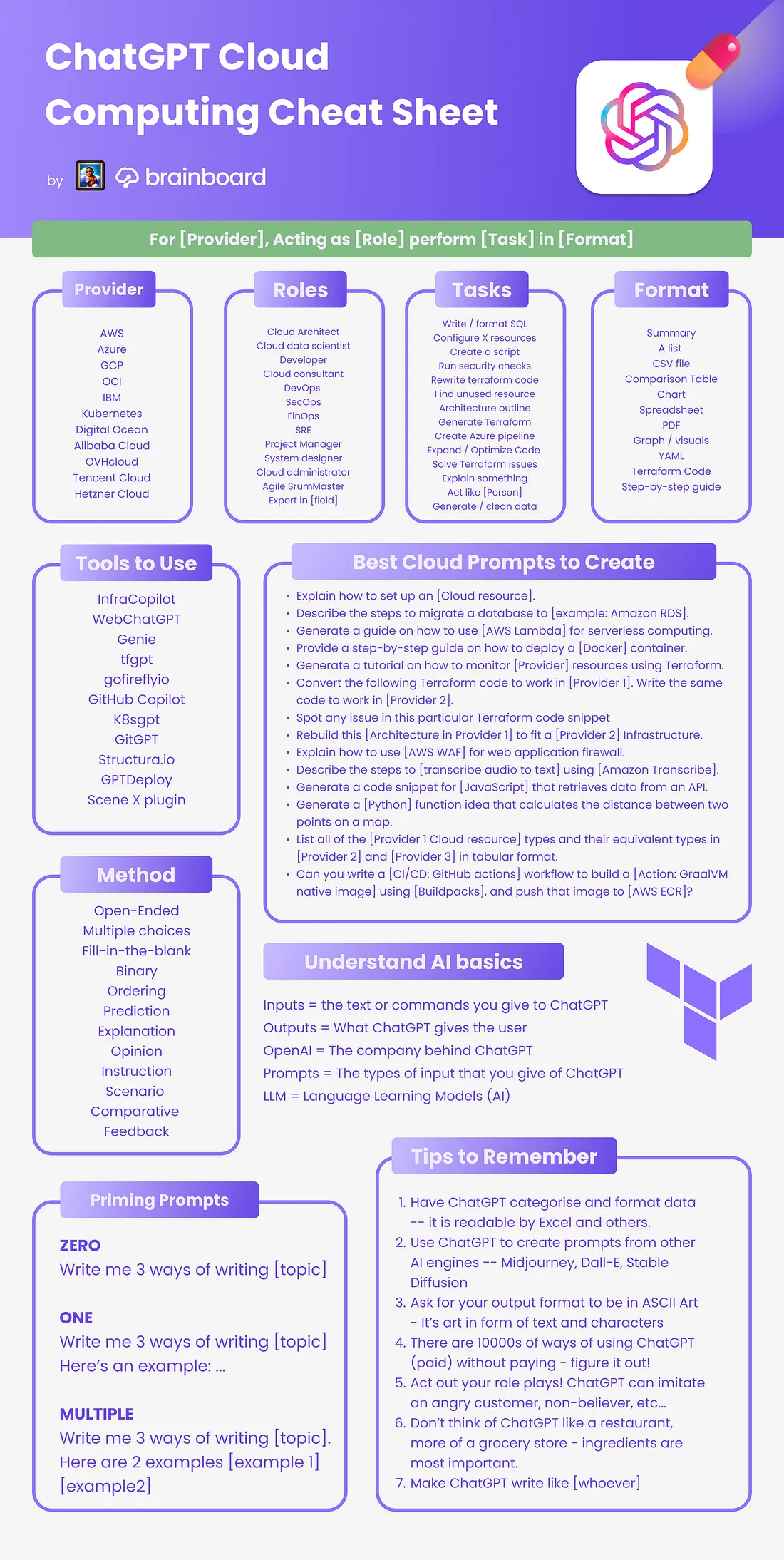
Cloud Computing Future
The Future of Cloud Computing
1. Smarter Artificial Intelligence
The future of cloud computing promises even more exciting possibilities. One of them is super-smart artificial intelligence (AI). Think of AI as your computer’s brain. With the help of the cloud, your device can connect to super-smart AI programs that can understand and respond to your questions, making your digital life easier and more fun.
2. Virtual Reality Everywhere
Imagine putting on a pair of special glasses, and suddenly you’re in a whole new world – this is virtual reality (VR). Cloud computing will make VR experiences better and more accessible. You’ll be able to explore distant planets, swim with dolphins, or even visit ancient civilizations, all from the comfort of your home.
3. Faster Internet Speeds
The cloud is like a superhighway for the internet. In the future, it’s going to get even faster! This means you won’t have to wait for videos to load or games to download. Everything will happen in the blink of an eye, thanks to cloud-powered high-speed internet.
4. Secure and Private
As we use the cloud more, keeping our information safe is super important. In the future, cloud computing will become even more secure. It will be like having an unbreakable lock on your digital treasure chest, ensuring that only you can access your stuff.
5. Eco-Friendly Clouds
Taking care of our planet is essential. Cloud computing of the future will be greener. Instead of using lots of electricity, these eco-friendly clouds will be kind to the environment, helping to reduce pollution and save energy.
Hybrid and Multi-cloud Strategies:
-
- What it means: Hybrid cloud combines private and public cloud structures. Multi-cloud, on the other hand, involves using multiple cloud services from different providers.
- Why it matters: By adopting hybrid and multi-cloud strategies, businesses can leverage the strengths of various cloud providers, enhance flexibility, optimize costs, and reduce potential risks like downtimes or vendor lock-ins. It provides a balance between scalability, security, and functionality.
Edge Computing:
-
- What it means: Edge computing refers to processing data closer to the data source, like IoT devices or local servers, rather than centralized data centers.
- Why it matters: With the explosion of IoT devices and the need for real-time processing, edge computing can reduce latency, improve speed, and relieve the load on data centers. This trend means applications and services can respond more swiftly and efficiently.
Serverless Computing:
-
- What it means: Serverless computing allows developers to build applications without worrying about underlying infrastructure. The cloud provider automatically manages the infrastructure, scaling resources as needed.
- Why it matters: This model can lead to faster deployments, reduced complexity, and cost savings. Also, businesses only pay for the compute power they use, eliminating the need to provision or maintain servers.
Enhanced Cloud Security and AI-Driven Defense:
-
- What it means: As threats become more sophisticated, cloud security is undergoing advancements with AI-driven tools and solutions. Also, these tools can predict, analyze, and mitigate threats in real-time.
- Why it matters: With cyberattacks growing in complexity and frequency, AI-driven defense mechanisms in cloud platforms can provide proactive security measures, ensuring data integrity and trustworthiness.
Sustainability and Green Cloud Computing:
-
- What it means: Green cloud computing involves the use of environmentally-friendly technologies and practices within cloud infrastructures. This includes energy-efficient servers, renewable energy sources, and efficient cooling systems.
- Why it matters: As environmental concerns gain prominence, businesses are looking for sustainable solutions. Green cloud computing not only reduces the carbon footprint but can also lead to cost savings in the long run.
Quantum Computing in the Cloud:
- What it means: Quantum computing leverages the principles of quantum mechanics to process vast amounts of data and perform computations at speeds unimaginable with current computers.
- Why it matters: As quantum computers become more accessible, integrating them with cloud platforms will provide extraordinary computational power. This can revolutionize sectors like cryptography, material science, and complex system simulations.
Containers and Kubernetes:
- What it means: Containers are lightweight, standalone executable packages that comprise software and all its dependencies. Kubernetes is an open-source platform that automates deploying, scaling, and operating application containers.
- Why it matters: Containers ensure that applications run consistently across different computing environments. With Kubernetes, managing these containers becomes more efficient. This combination enhances the development, deployment, and scalability of applications in the cloud.
Cloud-native Development:
- What it means: Cloud-native development refers to building and running applications that exploit the advantages of the cloud computing model. Also, it’s about how applications are created and deployed, not where.
- Why it matters: This approach allows businesses to be more agile, scaling on demand, and releasing updates or features more swiftly. Also, it emphasizes microservices, resilient architectures, and rapid delivery.
Automated Cloud Orchestration and Management:
- What it means: Cloud orchestration involves coordinating and managing multiple cloud services into a streamlined workflow. It goes hand-in-hand with automation tools that can handle tasks such as provisioning, scaling, and backups without manual intervention.
- Why it matters: Efficient cloud management and orchestration ensure resources are utilized optimally, reduces human errors, and saves time and costs.
Implications and Impact of Cloud Computing Evolution
Understanding the Broader Context: The rapid advancements in cloud technology aren’t just reshaping our digital infrastructure but also influencing business strategies, job markets, and even socio-cultural paradigms.
1. Economic Impact:
- Shift in IT Spending: With the move towards services like SaaS, PaaS, and IaaS, organizations are changing their spending from traditional IT infrastructure to cloud solutions. This transition allows for more predictable operational expenses and reduces significant upfront capital expenditures.
- Emergence of New Markets: As cloud services become more specialized, we’re witnessing the birth of niche markets and industries. This can be seen with the rise of startups focusing solely on cloud security, optimization, or specific cloud-based applications.
2. Social and Cultural Implications:
- Remote Work and Global Collaboration: The ubiquity of cloud solutions facilitates remote work, giving companies access to a global talent pool. Also, collaboration tools hosted on the cloud are breaking down geographical barriers, leading to more diverse and inclusive work environments.
- Digital Literacy: As our reliance on cloud services increases, there’s a growing need for digital literacy across all age groups. Also, educational institutions are now emphasizing cloud-based learning and training.
3. Environmental Considerations:
- Data Center Efficiency: As cloud providers scale, there’s a conscious effort to make data centers more energy-efficient and reduce their carbon footprint. These initiatives are crucial in the broader context of global climate goals.
- E-waste Reduction: Cloud computing reduces the demand for high-end computing hardware at the user end, potentially decreasing e-waste in the long run.
4. Ethical and Privacy Concerns:
- Data Sovereignty: With data centers spread globally, concerns about where data resides and under which jurisdiction it falls are rising. This has implications for user privacy and data security.
In Conclusion
The future of cloud computing is undoubtedly exciting and holds the potential to be transformative. Firstly, with the emergence of trends like hybrid cloud, the landscape is shifting to provide more tailored solutions for businesses. Furthermore, edge computing enhances the way we process data, bringing computation closer to data sources and reducing latency. Additionally, the integration of AI-driven security promises a safer and more robust environment against cyber threats. Given these advancements, it’s imperative for both organizations and individuals to monitor these trends closely. By doing so, they can ensure they harness the full potential of the cloud in the forthcoming years.
Hello, I’m Cansu, a professional dedicated to creating Excel tutorials, specifically catering to the needs of B2B professionals. With a passion for data analysis and a deep understanding of Microsoft Excel, I have built a reputation for providing comprehensive and user-friendly tutorials that empower businesses to harness the full potential of this powerful software.
I have always been fascinated by the intricate world of numbers and the ability of Excel to transform raw data into meaningful insights. Throughout my career, I have honed my data manipulation, visualization, and automation skills, enabling me to streamline complex processes and drive efficiency in various industries.
As a B2B specialist, I recognize the unique challenges that professionals face when managing and analyzing large volumes of data. With this understanding, I create tutorials tailored to businesses’ specific needs, offering practical solutions to enhance productivity, improve decision-making, and optimize workflows.
My tutorials cover various topics, including advanced formulas and functions, data modeling, pivot tables, macros, and data visualization techniques. I strive to explain complex concepts in a clear and accessible manner, ensuring that even those with limited Excel experience can grasp the concepts and apply them effectively in their work.
In addition to my tutorial work, I actively engage with the Excel community through workshops, webinars, and online forums. I believe in the power of knowledge sharing and collaborative learning, and I am committed to helping professionals unlock their full potential by mastering Excel.
With a strong track record of success and a growing community of satisfied learners, I continue to expand my repertoire of Excel tutorials, keeping up with the latest advancements and features in the software. I aim to empower businesses with the skills and tools they need to thrive in today’s data-driven world.
Suppose you are a B2B professional looking to enhance your Excel skills or a business seeking to improve data management practices. In that case, I invite you to join me on this journey of exploration and mastery. Let’s unlock the true potential of Excel together!
https://www.linkedin.com/in/cansuaydinim/

